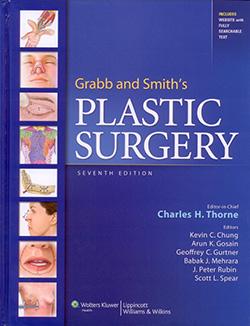
Rhinoplasty is a surgical procedure that alters your nasal shape and/or improves your breathing. Since noses come in different shapes and sizes, people seek rhinoplasty for different reasons. Some nasal shapes are more common in specific ethnic groups and some undesirable nasal shapes are the result of previous rhinoplasty surgery that may have been overdone or inexpertly performed. One such characteristic shape is the “saddle nose.”
What is A Saddle Nose?
While some people seek rhinoplasty because of a bump on the bridge of the nose, a saddle nose is the opposite – the bridge is weak or scooped out – and looks like a saddle when viewed in profile. Depending on the cause, the nasal tip may also be rotated upwards resulting in an overly short or pug nose.
What Are The Causes?
Saddle noses have four main causes: 1) Previous rhinoplasty surgery, 2) Previous trauma, 3) Ethnic variation and 4) Collapse from cocaine use (The cocaine pattern is slightly different from the upper part of the bride intact but the middle part of the nasal bridge collapsed). In those cases caused by previous surgery, the original procedure to remove a hump was probably overdone. In cases caused by trauma, the bridge has been crushed by the trauma. Finally, some African and Asian ethnic groups demonstrate more frequent examples of patients who have a weak nasal bridge just because they were born that way.
The Treatment
While the majority of primary (first time) rhinoplasties involve more removing of tissue than adding, the saddle nose is treated by the addition of tissue. In patients who were born with a weaker nasal bridge who desire aesthetic improvement, an implant of artificial material such as Silastic can be used. This is an extremely common procedure in parts of Asia. The patients who have had previous surgery, trauma, or complications of cocaine use present a more difficult, often scarred, situation and it is almost always better to use the patient’s own tissue or human cartilage from a tissue bank. Artificial materials are much more likely to lead to complications in these situations.
Depending on how much tissue is needed, the amount of scarring, and the patient’s preference, the surgeon may select cartilage from inside the nose (nasal septum), behind the ear, rib cartilage, bone from the skull or hip, or human cartilage that has been chemically treated and frozen at a tissue bank.
All these details will be discussed with you by your chosen rhinoplasty surgeon during the consultation. He/she will recommend the best course to take to achieve the desired aesthetic results while improving your nasal function.
Steps to Recovery
To avoid complications from arising post-operatively, remember to strictly follow your surgeon’s instructions. It is also important to give your body the time it needs to fully heal, especially when the cartilage or bone is grafted from a different part of your body.
You can expect some swelling and bruising around your eyes and nose. However, it will begin to improve on the third day or so. Approximately 2/3 of the swelling will be gone after a month and the remaining 1/3 after a year. In general, you will look totally presentable with 2 weeks.
It is recommended that you meet with a specialist if you are considering rhinoplasty for a saddle nose. Dr. Thorne has been teaching, writing, and performing rhinoplasty for more than 30 years. If you wish to speak with an expert and learn more, arrange an online appointment with him here.

Dr. Thorne is the Editor-in-Chief and the author of several chapters in Grabb and Smith's PLASTIC SURGERY, 7th Edition.
